Architecture
The next generation of architects and engineers exploring space and surface
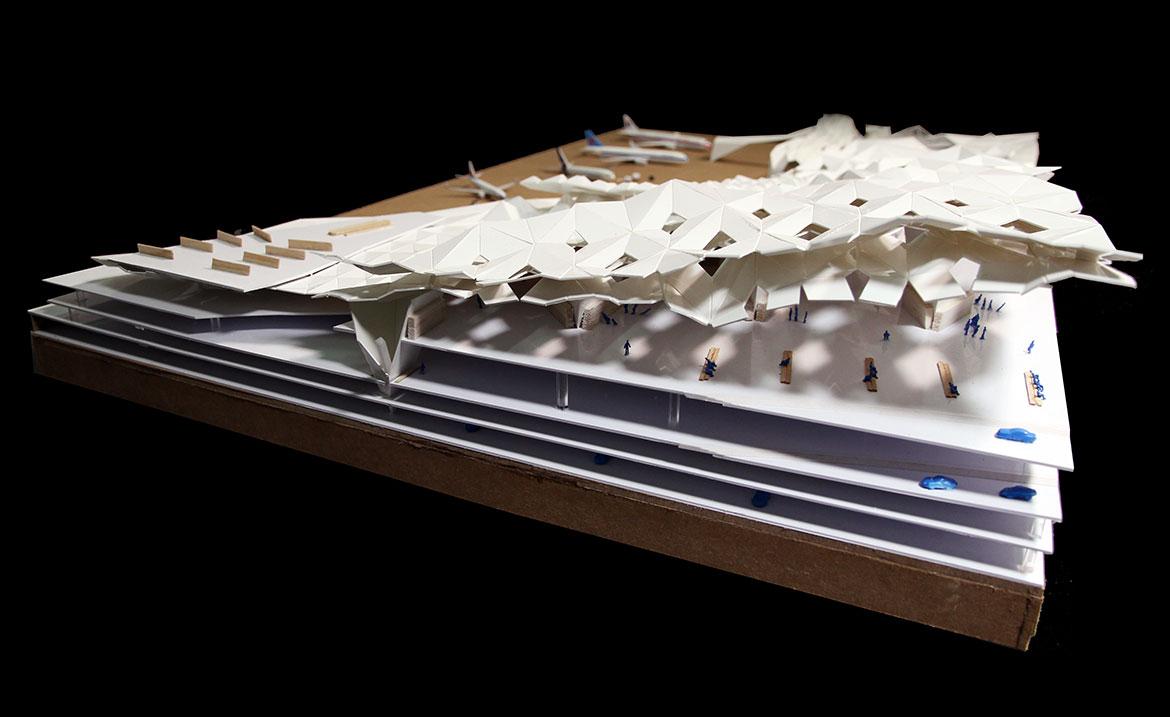
Gu Anjie graduated from the prestigious China Academy of Art, with several scholarships under her belt and a Bachelor in Engineering from the School of Architecture, yet architecture was not her first choice when she joined the school. A love of drawing and craft led her to CAA but architecture drew her in later, when she tried her hand at some of the design courses. The Dean of the department, Wang Shu, was a major inspiration for her. Anjie’s final year thesis at CAA focuses on a new way of approaching the design of airport terminals. She now studies at the University College London for a postgraduate degree and her Part 2 in Architecture, which she expects to complete later this year. Would most like to work for: Kengo Kuma
Exploring space and surface, the next generation of practitioners setting the architectural agenda
Writer: Ellie Stathaki
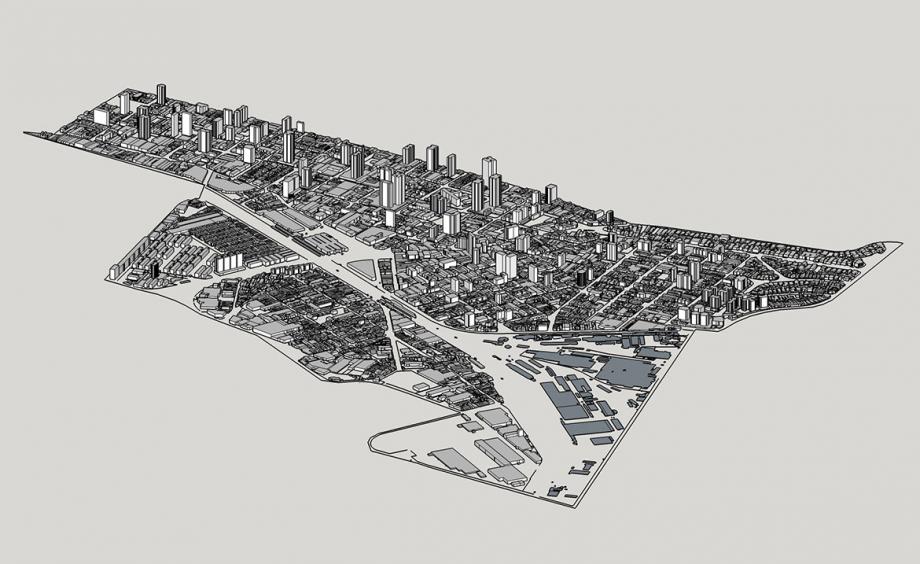
‘I guess since I was 9 years-old I had a strong desire to solve the urban chaos, and living in São Paulo, a big and confusing metropolis, has contributed a lot to that’, says Renata Campiotto. Becoming an architect was a no-brainer for the young Brazilian, and Campiotto graduated in architecture and urbanism from FAUUSP in Sao Paulo in 2015. The country’s great modernists – names such as Vilanova Artigas, Joao Filgueiras Lima and Lina Bo Bardi – are among her key influences, while her final year project revolves around the heritage of Sao Paulo’s Lapa neighbourhood. Her next step is to further specialise through education and a master’s degree. Would most like to work for: Paulo Mendes da Rocha, Alvaro Siza, Rafael Moneo
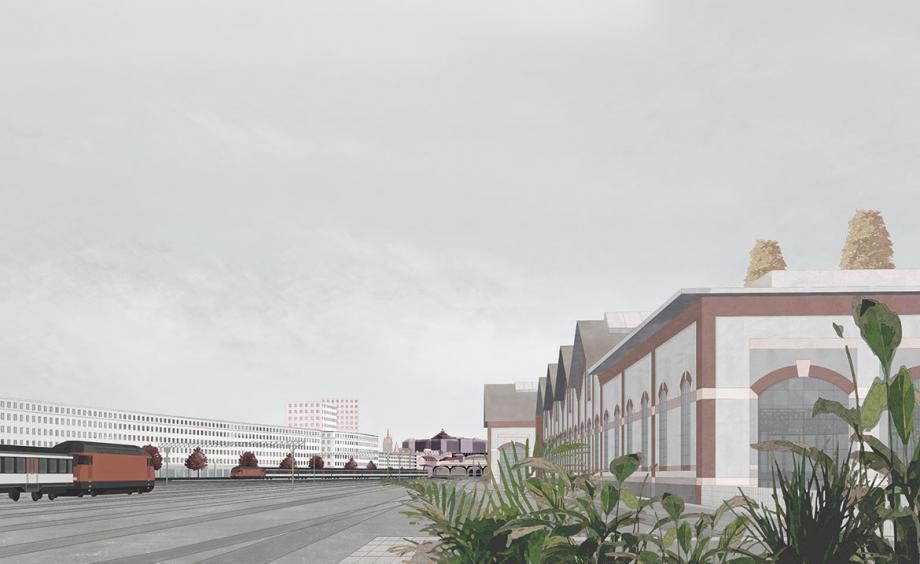
Katharina Ehrenklau’s beautiful collages caught our eye immediately – they are part of her award-winning graduation thesis on Zurich’s disused railway tracks. Her degree, from the high profile Eidgenössische Technische Hochschule Zürich, was completed last summer with Distinction, while before that she also managed to fit in a semester at the Harvard Graduate School of Design in the US. Having interned for key global firms such as OMA/AMO in the Netherlands and Atelier Bow-Wow in Japan, Ehrenklau is already working on her first, own project: a hut in the Swiss Alps, which is gearing up to start on site soon. Would most like to work for: at the moment, I am quite happy that I can work on own projects.
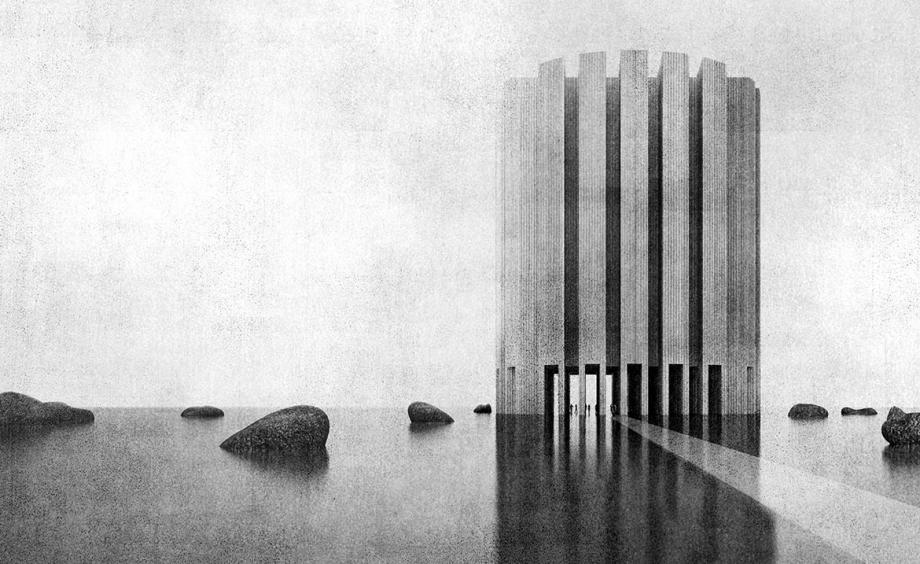
Drawing on the current debate around Europe’s ongoing refugee crisis, Swiss-born Valentino Vitacca worked on a lighthouse design for the small Italian island of Lampedusa for his final year thesis from the École polytechnique fédérale de Lausanne. The project, awarded best of its year at EPFL, encompasses a memorial for the refugees, an auditorium, a cafeteria and of course the traditional lighthouse functions. His EPFL Master’s degree complemented his earlier BA from the Politecnico di Milano. Vitacca combines work experience at a number of Swiss architecture firms with a strong theoretical background, although his next steps involve ‘practicing the theory’, he explains.
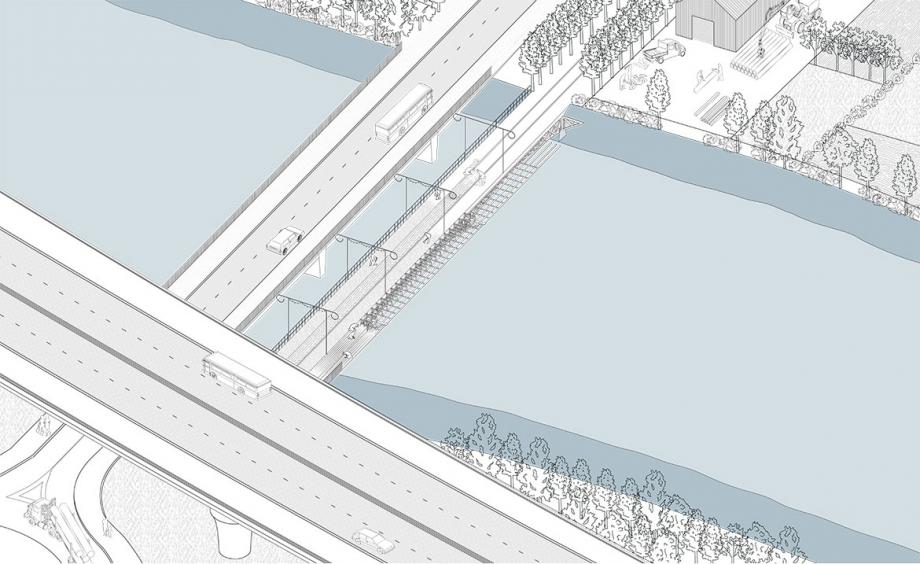
As students at the École Nationale Supérieure d’Architecture Paris-Malaquais, Milena Bleibtreu and Corentin Gallard collaborated on one of their school’s best thesis projects of the year – an exploration of travel, trains and the Lyon-Turin connection through the mountains. Their joint experience combines academic stints in architecture schools of Germany and Turkey, with work at French, German, Turkish and American architecture firms. Their influences have a similarly global perspective, ranging from London-based Assemble Studio to Eero Saarinen’s work. Would most like to work for: David Chipperfield or Paola Vigano (Bleibtreu), Secchi and Vigano or Raum Studio or Fala Atelier (Gallard)
Receive our daily digest of inspiration, escapism and design stories from around the world direct to your inbox.
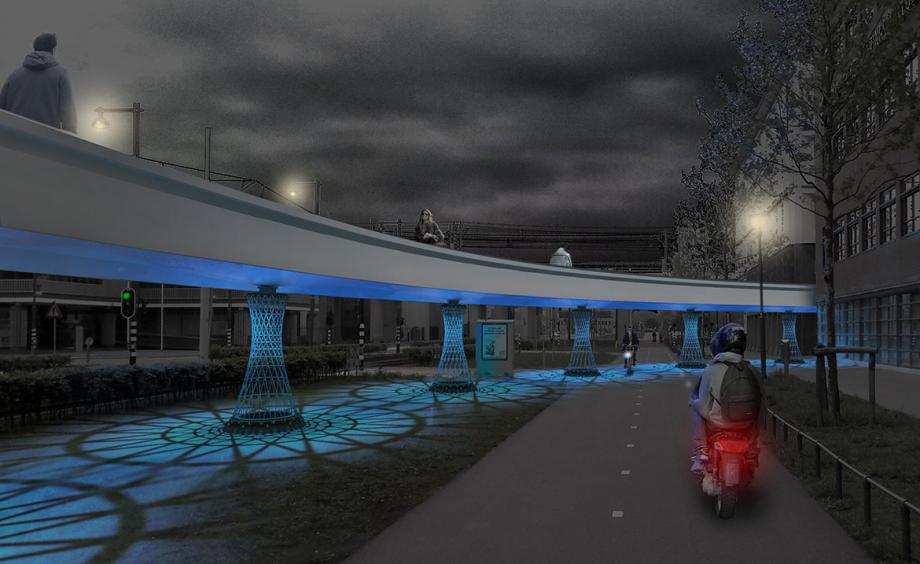
Recent graduate Pierre Mostert, followed his studies at Hogeschool Rotterdam with two courses at the prestigious Delft University of Technology (a Bachelor and Masters), completing his academic qualifications in 2015 with the highest possible grade – a round ‘10’. ‘As son of a carpenter I was taught to appreciate the building practice from a young age’, he explains. His award-winning graduation project focuses on the design of a pillar of a pedestrian bridge. Using the experience he gained while working at architecture firms during his studies, Mostert now hopes to develop his thesis into a scheme that can be applied directly to either the furniture or the building design world. Would most like to work for: Arup
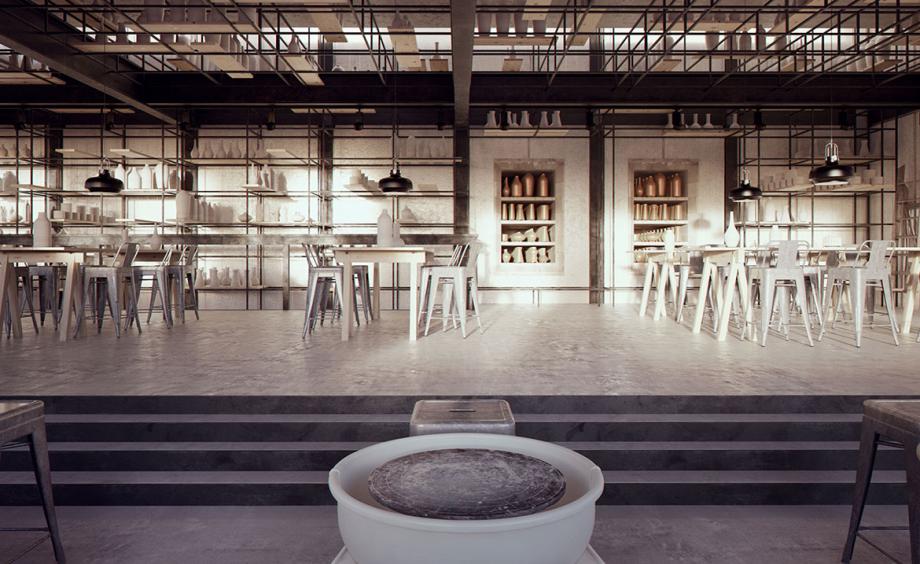
Beth Johnson’s work focuses on the relationship of architecture and materials. Graduating from the Royal Danish Academy of Fine Arts, she has an ongoing fascination with ceramics in architecture, which reflects on her final year project at the school. Her proposal for the transformation of the Kähler factory in Zealand includes both offices and a new ceramic design workshop and artist residency, winning the Henny and Johan Richter scholarship. Her next step involves work at SAAW (Simon Astridge architecture workshop) where Johnson hopes to be able to continue and develop her passion for ceramics and material details within architecture. Would most like to work for: collaboration with ceramicists and/or designers who specialise in a trade/material
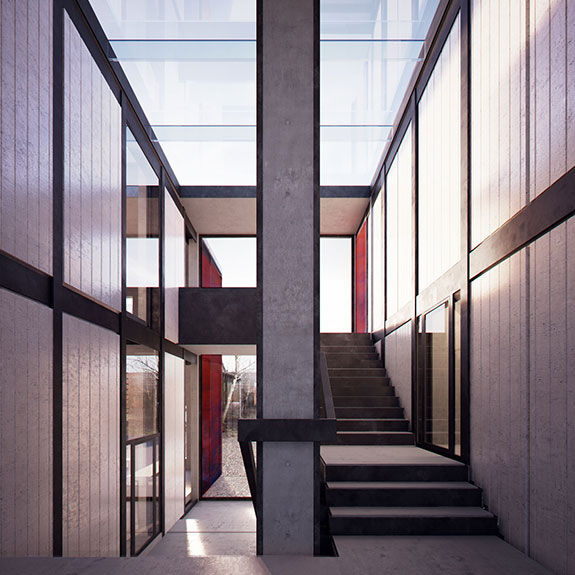
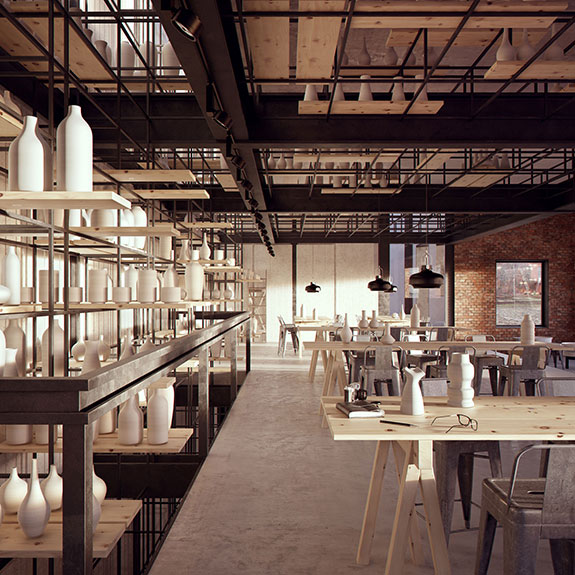
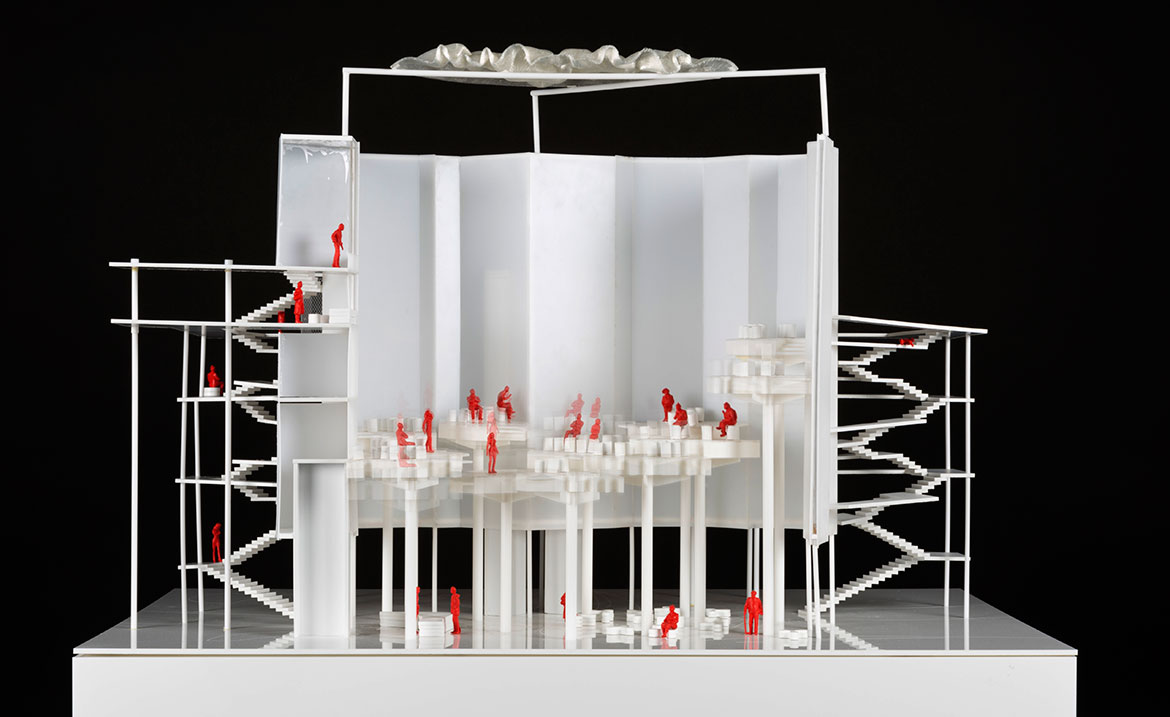
‘For me architecture is like the totality of theatre - it is about creating a space where a story will happen, where people are the actors who make the plot alive’, says recent TU Wien graduate Dina Dragoshinska. No surprise then that her highly praised graduation project revolves around theatre productions and a dynamic system of platforms that allows actors, action and audience to mix in an unprecedented way. This way, ‘the whole theatre becomes a scene’, she explains. Bulgaria-born Dragonishka would like to eventually set up her own office, with her brother, who is also an architect. Would most like to work for: Haworth Tompkins
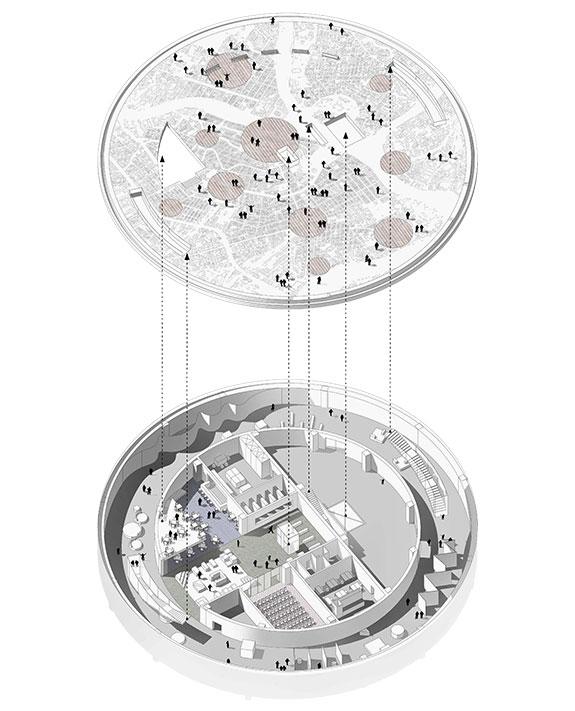
Alexander Zinoviev trained as an architect at the St Petersburg University of Architecture and Civil Engineering, finishing his studies with an international award winning thesis. In 2015 he graduated from Moscow’s Strelka Institute with a final research project focusing on the future of leisure. Architects influence him, but cities do too. ‘Togliatti or Astana as well as London and Amsterdam influenced me more than any well known projects or architect’, he says. He’s taken part in workshops and competitions already, while his experience at architecture offices in-between his studies whetted his appetite for practice. Seeking work experience is his next step. Would most like to work for: Zumthor, Ishigami, Nouvel, Koolhaas, Sanaa
alexanderzinoviev.com
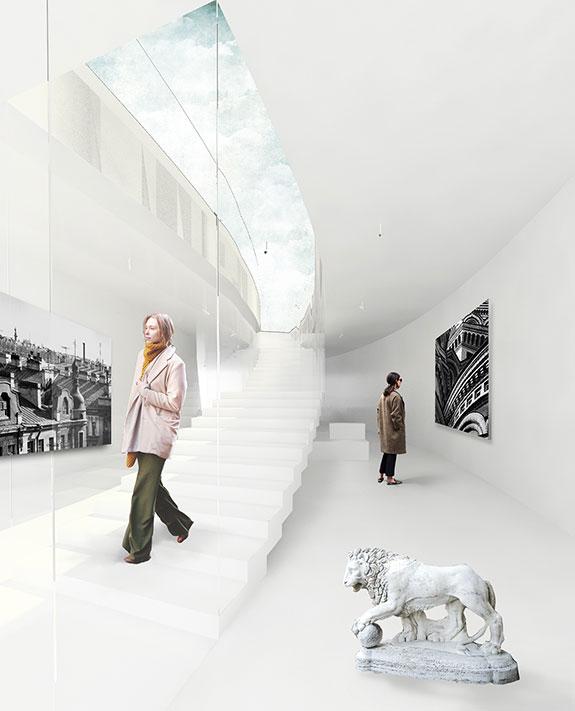
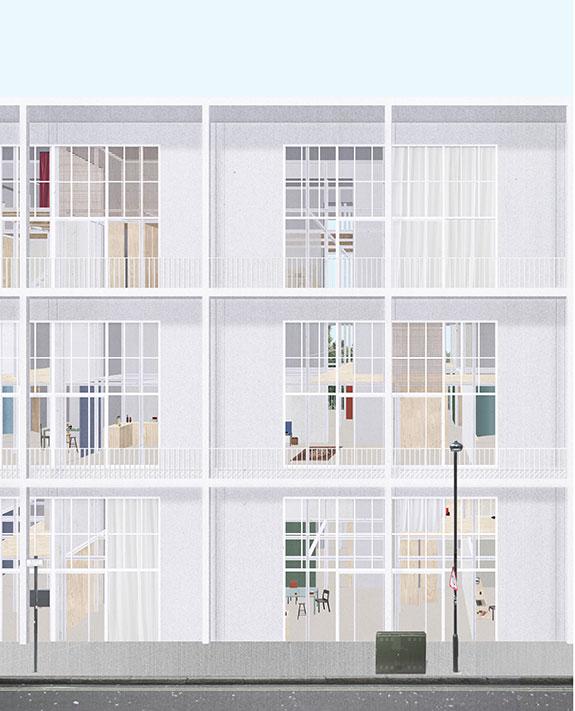
‘I decided to become an architect whilst studying fine art at Goldsmiths University’, explains recent Architectural Association graduate Louise Underhill. ‘I was inspired by artists such as Richard Serra, exploring the way the body and movement relates to space and surface’. Underhill was awarded her Diploma with Honours, her final project delving into the architecture of the terraced house typology. For this work, she plays with dualities springing from distinctions within the home, such as differences between interior/exterior, front/back, upstairs/downstairs, adult/child, man/woman, work/domestic and single/many. Her distinctions also include the Architectural Association Dennis Sharp prize for writing. She now works at London architects 6a. Would most like to work for: 6a architects

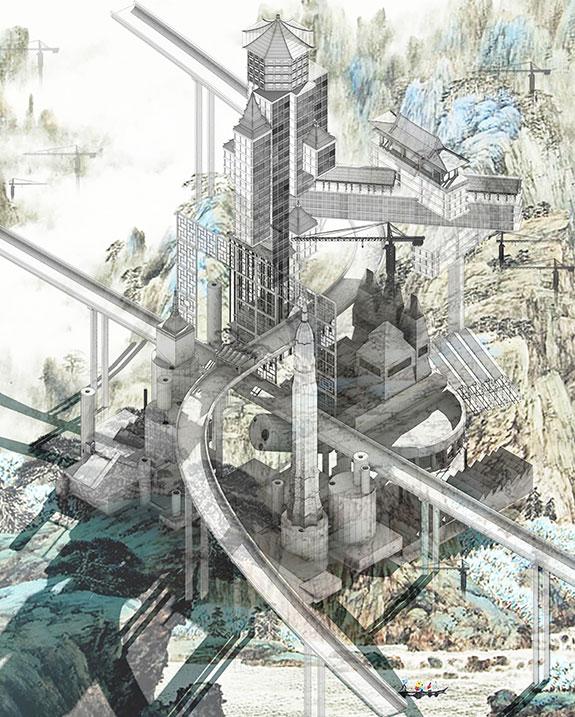
Boni Yuen studied economics and social policies in her native Hong Kong before moving to London to pursue an architect’s training at the Royal College of Art. The intersection of financial systems and social norms with design is a key interest for Yuen. Her thesis – awarded with Distinction – ‘investigates the implications of geopolitics and conflict dynamics in urban design, exploring the use of game theory in architectural design’. Currently working for London architects ACME, she hopes to be able to ‘further explore on the possibilities of applying geopolitical strategy for space formation’ in the future. Would most like to work for: David Chipperfield or Richard Rogers
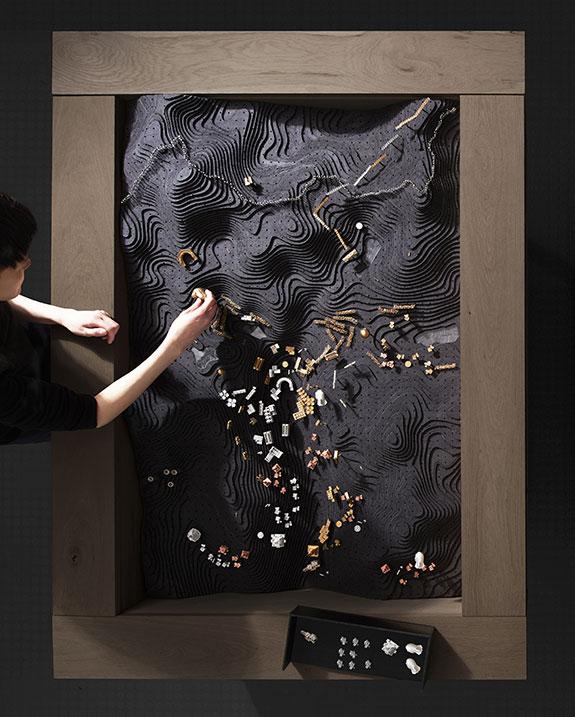

Bartlett graduate Ben Ferns locates his influences in the work of Italian architects, from Post-war architecture of Carlo Scarpa, to the Italian Baroque of Francesco Borromini. ’To reinforce this, my thesis re-evaluated Scarpa’s modernism in line with a Baroque mode of thought, in order to go beyond the usual phenomenological reading of his work,’ he explains. His research flourished and Ferns’ work was nominated for the RIBA Silver President’s Medal, and won the Sir Banister Fletcher Medal and the Bartlett School of Architecture Medal. He is currently employed at Hopkins Architects, while wants to continue exploring the potential between hand drawing and digital collage. Would most like to work for: Hopkins Architects. www.benjaminferns.co.uk

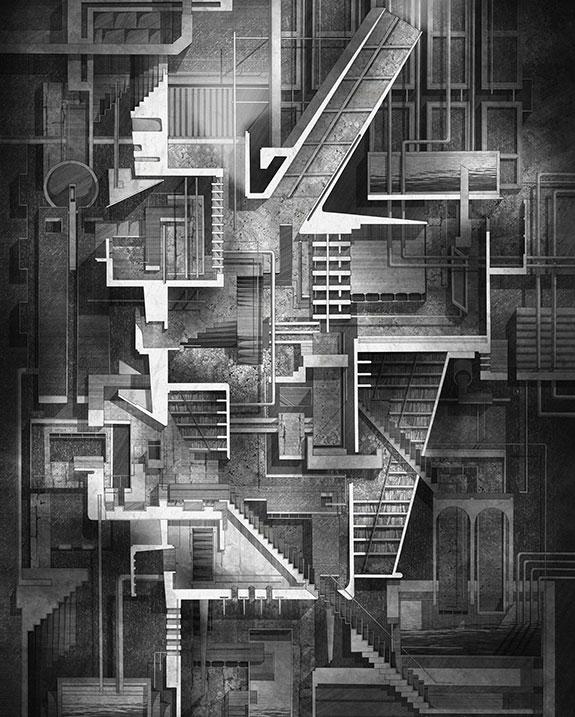
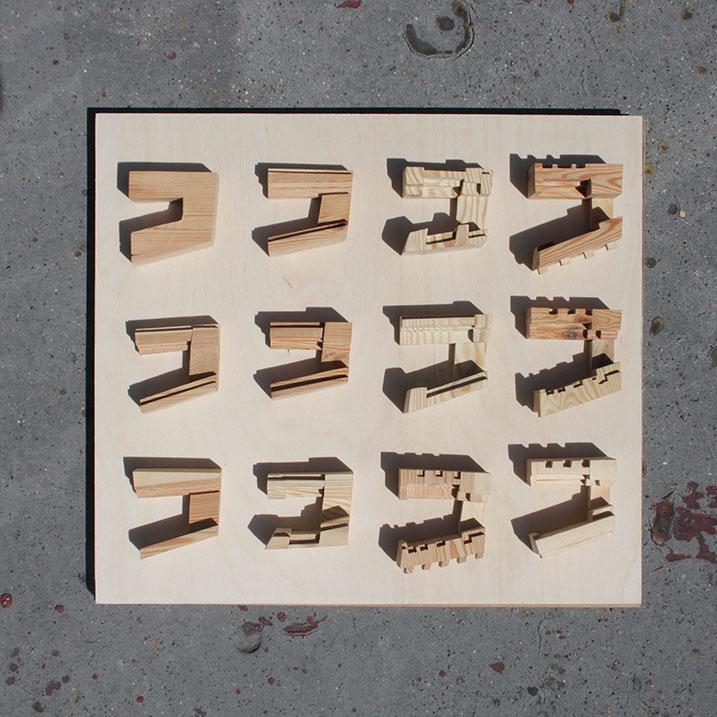
Not only did Aska Welford graduate top of her year from the University of Cambridge, with a first-class degree, but she also won the RIBA Eastern Region Prize. Her two-part graduation project started off with ideas for the development of an industrial estate in East London, before focusing on a specific plot in the masterplan. Her practical experience includes some prestigious names too – from Wallpaper* Architects Directory’s Delvendahl Martin to Turner Prize nominees Assemble Studio. Welford is currently spending her year out as an Architectural Assistant at Karakusevic Carson Architects, working on a social housing scheme. She hopes to do at least two years of work experience before returning to complete her studies. Would most like to work for: Sarah Wigglesworth Architects, Níall McLaughlin Architects, Shigeru Ban, Atelier Bow-Wow and Tezuka Architects
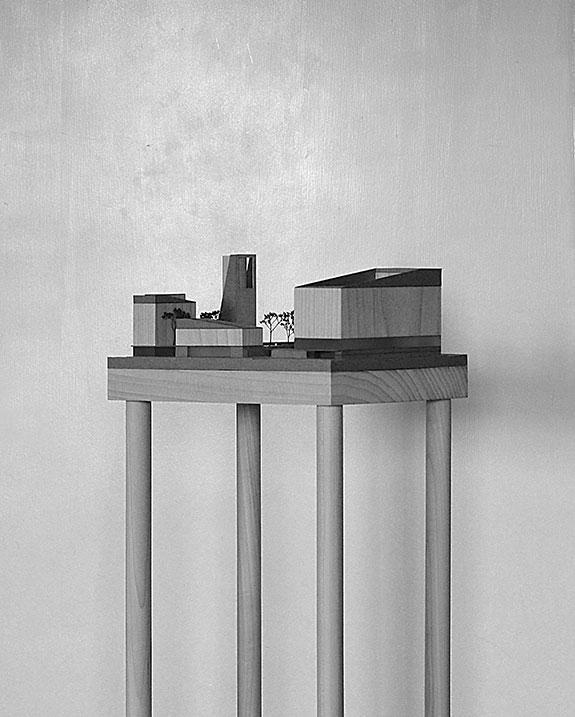
Finn Wilkie combined time at the University of Strathclyde and the Glasgow School of Art – he graduated from the latter earlier this year with Diploma in Architecture with Distinction, before returning last September to begin a Master’s degree. His work earned distinctions throughout his studies and his graduation project was no exception; it won the coveted RIBA President’s Silver Medal. His thesis is a critique of ‘the managerial urban paradigm of Critical Reconstruction’ and questions the post-unification planning system in Berlin. He counts Alison and Peter Smithson, Sigurd Lewerentz and Karl Friedrich Schinkel as key influences. Would most like to work for: 6A Architects, Sergison Bates or Miroslav Šik
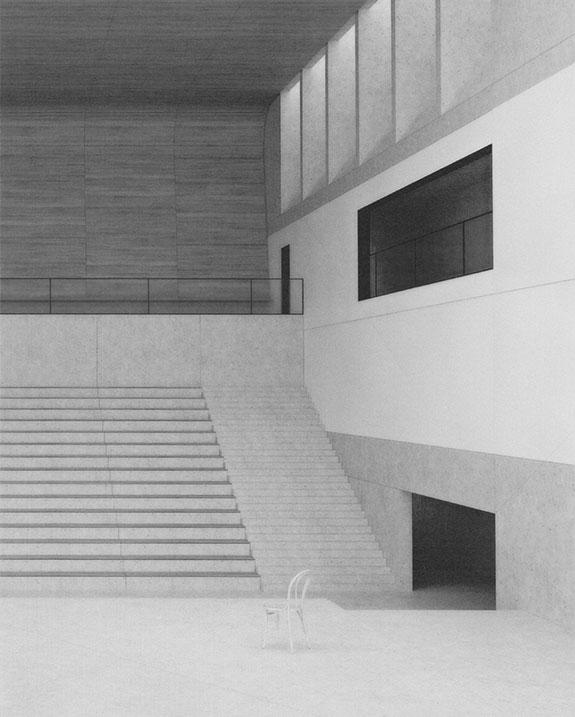
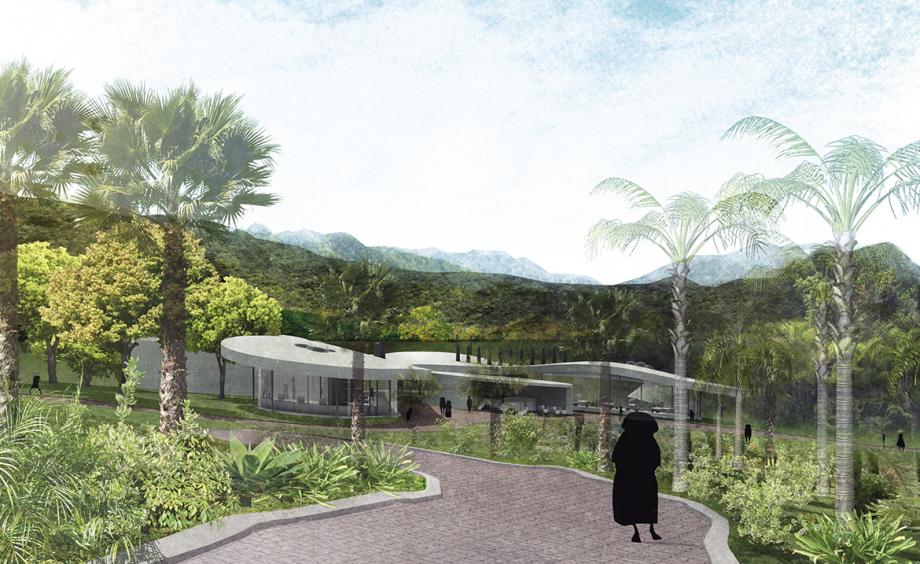
Casey Worrell graduated from Columbia University GSAPP in May 2015 with a Master of Science in Advanced Architectural Design. His work there includes the redevelopment of Duncan Plaza and a building for ‘African (American) music’, as an extension to the American Museum of Natural History. His Bachelor of Architecture is from the University of Arkansas. His experience is rich and varied – from work experience at Gensler in LA and Nieto Sobejano in Europe, to making the most of two traveling scholarships, while in his final year, he was involved in the New Museum creative incubator, ’NewInc’. Would most like to work for: Herzog and de Meuron
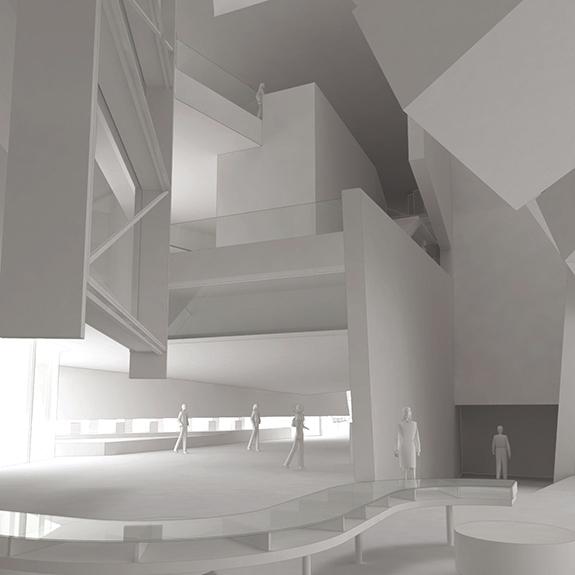
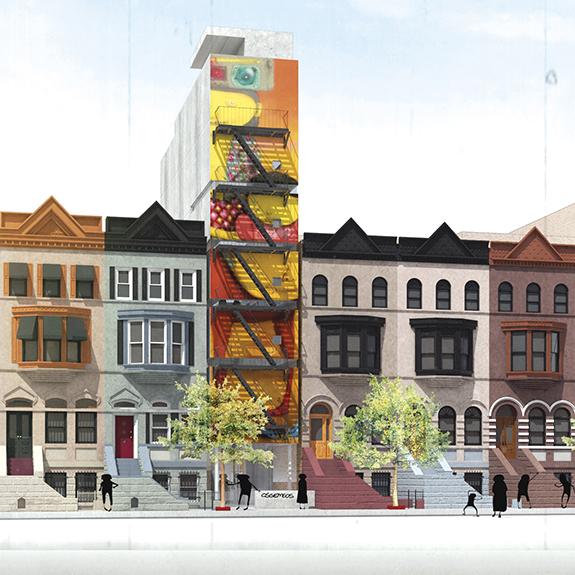
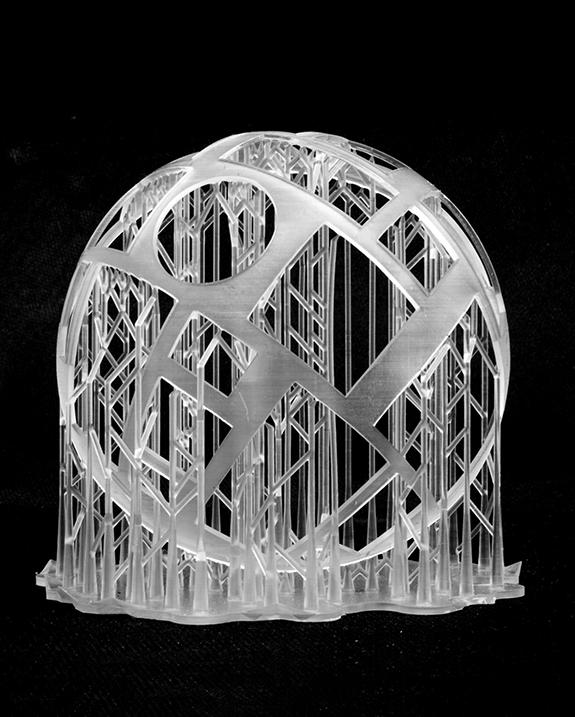
Alexander McLean finished his Part I at the University of Cambridge before crossing the pond to complete his BA in Architecture at the prominent Cooper Union school in New York. Having worked at 6a architects in London, McLean was also a founding member of the Turner Prize nominated collective Assemble Studio. His multi-award winning thesis examines an architecture that sits, not in a flat plane, but on a globe-like basis. McLean uses case studies to explore the implications of this spherical ground. He was been working on a project for the Cooper Union Institute for Sustainable Design documenting glacial retreat in the alps, and is currently at Andrew Berman Architect in New York. Would most like to work for: Alvaro Siza
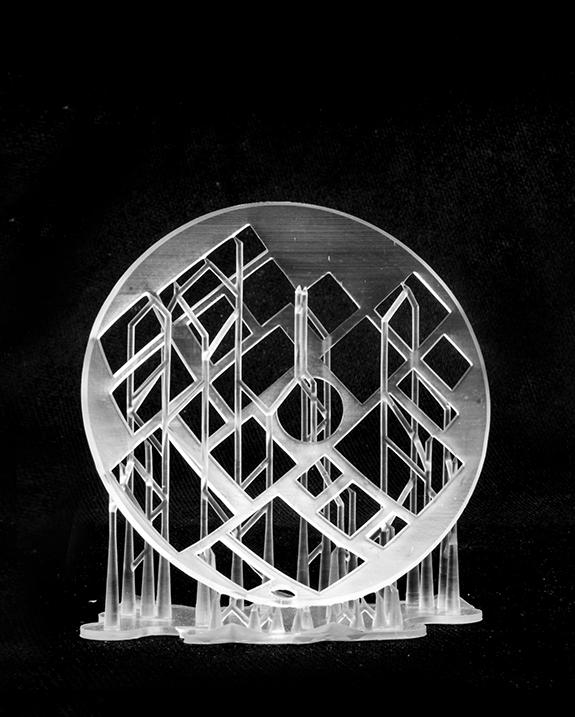

Andrew Fu redesigned the ubiquitous hamburger stand for this final year thesis at Cornell University, exploring the role of architecture in creating myths and narratives, as well as the way we consume. For his designs, he draws inspiration from key architects’ work, such as Atelier Bow Wow in Japan and Glenn Murcutt in Australia – his work experience is another valuable asset, as it include time at prominent offices such as Tod Williams Billie Tsien Architects. Fu is currently working at Cornell, as a teaching associate for the first year studio, but this doesn’t mean he wants to give up practice. His aim is to find a post at an architecture practice next year. Would most like to work for: Tod Williams Billie Tsien Architects and SO-IL
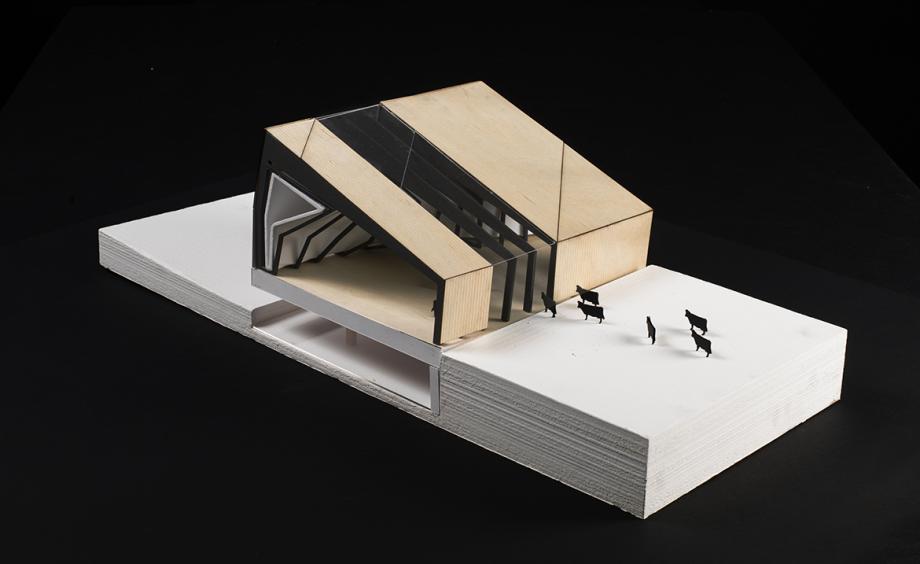
Claudia Bode recently graduated from the Massachusetts Institute of Technology (MIT) with an M.Arch. Her time at MIT was extremely fruitful; Bode became a researcher for the Urban Risk Lab, while she also began ‘a design-research collective, which is in the process of constructing several buildings in Tanzania’, she explains. Her thesis – the ‘Blue Heart’ – looks at a ‘new nature’ that responds to the pressures of globalization and climate change. She currently teaches at two universities in Boston, while also researches, but this is not the endgame for her; she is planning a move to Berlin in the near future. Would most like to work for: Lateral Office, Luis Callejas, OMA/AMO
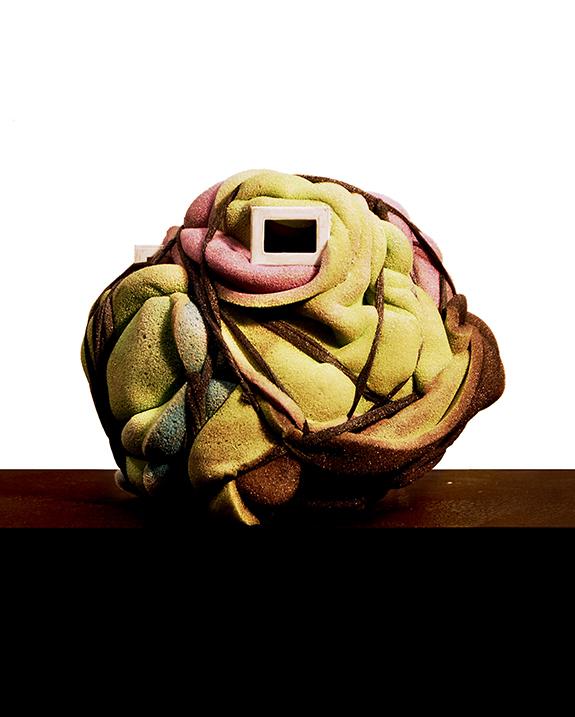
Sci-Arc graduate Jacob Hartzell investigates the notion of suspense in architecture and how we can make the most of a building’s ‘potential energy’. This theme informed his final thesis at the school and led to the completion of his 2-year M. Arch course and a Merit Award for outstanding work. ’Travelling worldwide as a young person helped open my perspective on different cultures,’ he says. ’Seeing first-hand the pivotal role architecture plays globally inspired me to study the profession.’ Hartzell is currently considering his options, looking to work at the right architecture firm to earn his professional licence. Would most like to work for: Herzog and de Meuron. www.jacob-hartzell.squarespace.com
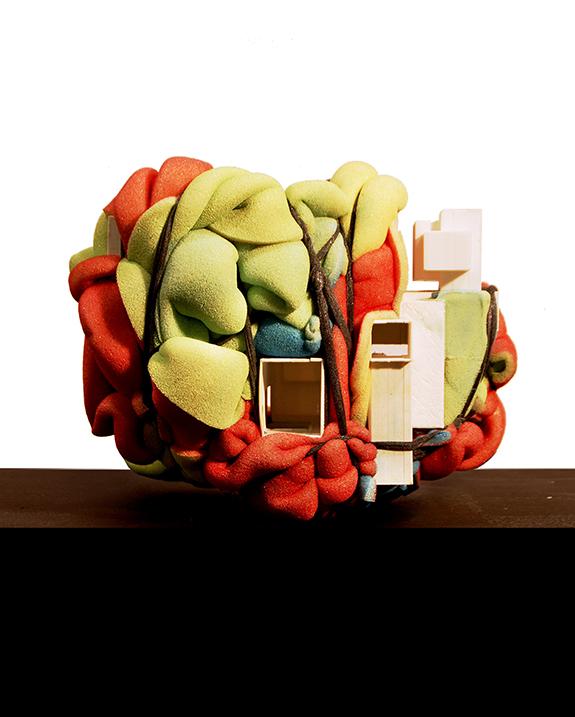
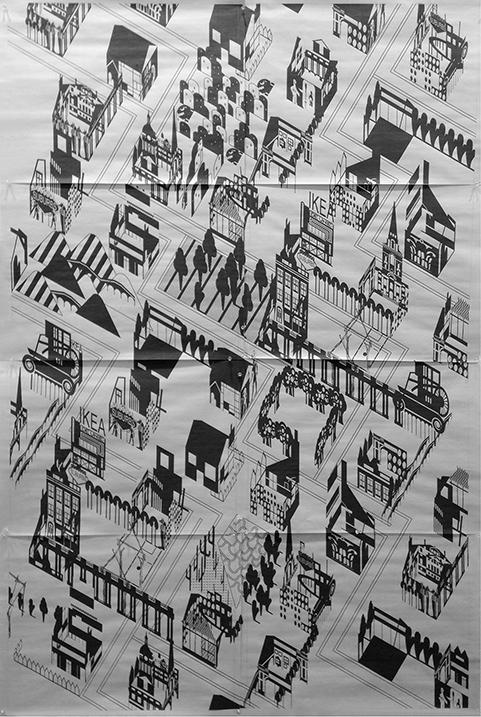
’I have always been fascinated with the interaction between people and their built environment,’ says Kara Biczykowski. Biczykowski has just completed a masters course at the Yale School of Architecture, winning several awards and scholarships on the way. Her thesis uses two drawing styles, Michael Web and David Hockney’s, ‘as a technique to speculate on the formal and conceptual understanding of a FAT project’. The British office’s work has been a key influence for Biczykowski. Since her graduation, she has worked at Tatiana Bilbao’s architecture office in Mexico City, researching social housing with her. She is currently in New York, working at Joel Sanders Architect. Would most like to work for: Alberto Kalach
karamarie.biz
Ellie Stathaki is the Architecture & Environment Director at Wallpaper*. She trained as an architect at the Aristotle University of Thessaloniki in Greece and studied architectural history at the Bartlett in London. Now an established journalist, she has been a member of the Wallpaper* team since 2006, visiting buildings across the globe and interviewing leading architects such as Tadao Ando and Rem Koolhaas. Ellie has also taken part in judging panels, moderated events, curated shows and contributed in books, such as The Contemporary House (Thames & Hudson, 2018), Glenn Sestig Architecture Diary (2020) and House London (2022).
-
 French bistro restaurant Maset channels the ease of the Mediterranean in London
French bistro restaurant Maset channels the ease of the Mediterranean in LondonThis Marylebone restaurant is shaped by the coastal flavours, materials and rhythms of southern France
-
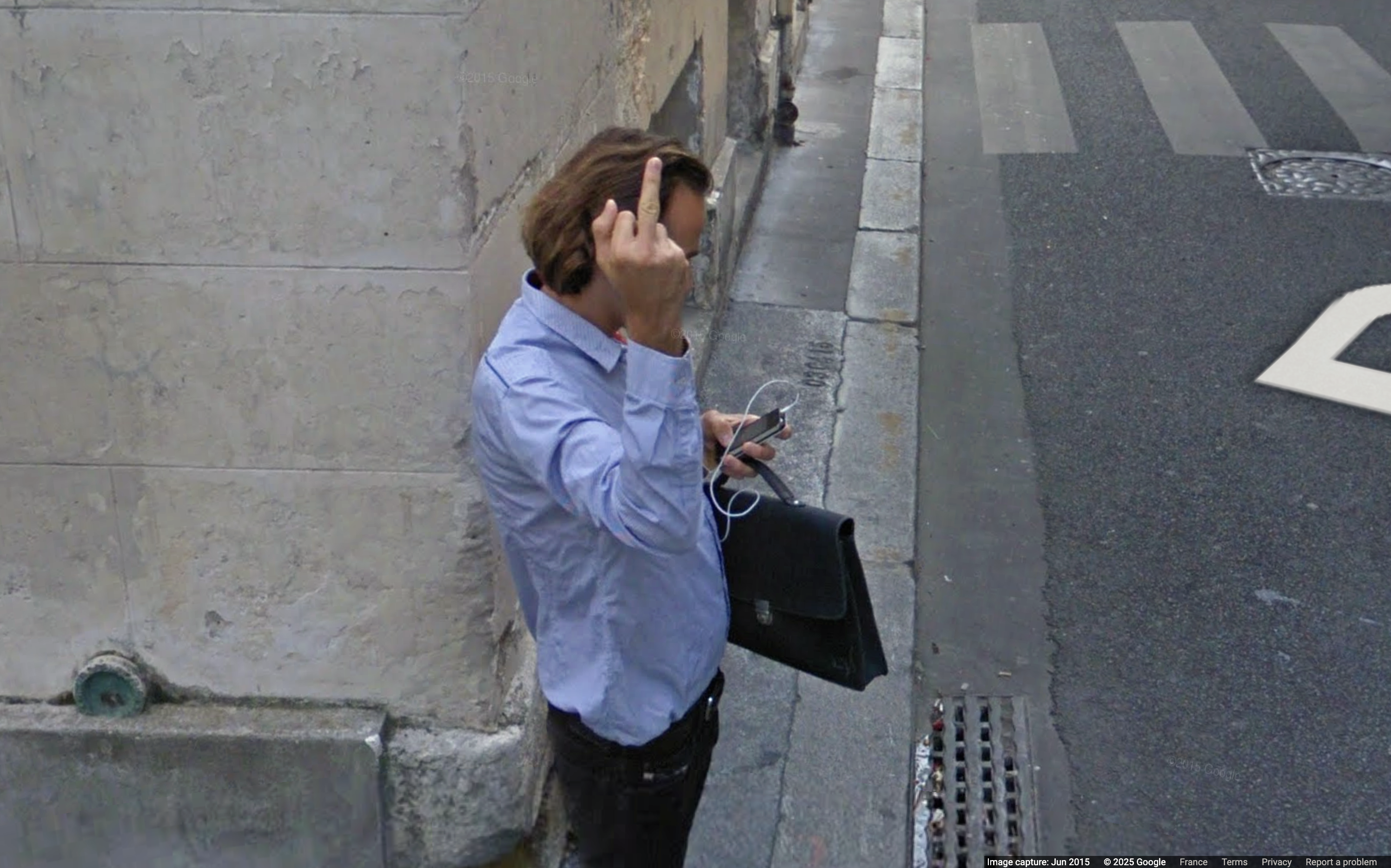 How ethical is Google Street View, asks Jon Rafman in Copenhagen
How ethical is Google Street View, asks Jon Rafman in CopenhagenIn 'Report a Concern - the Nine Eyes Archives' at Louisiana Museum of Art, Copenhagen, Jon Rafman considers technology's existential implications
-
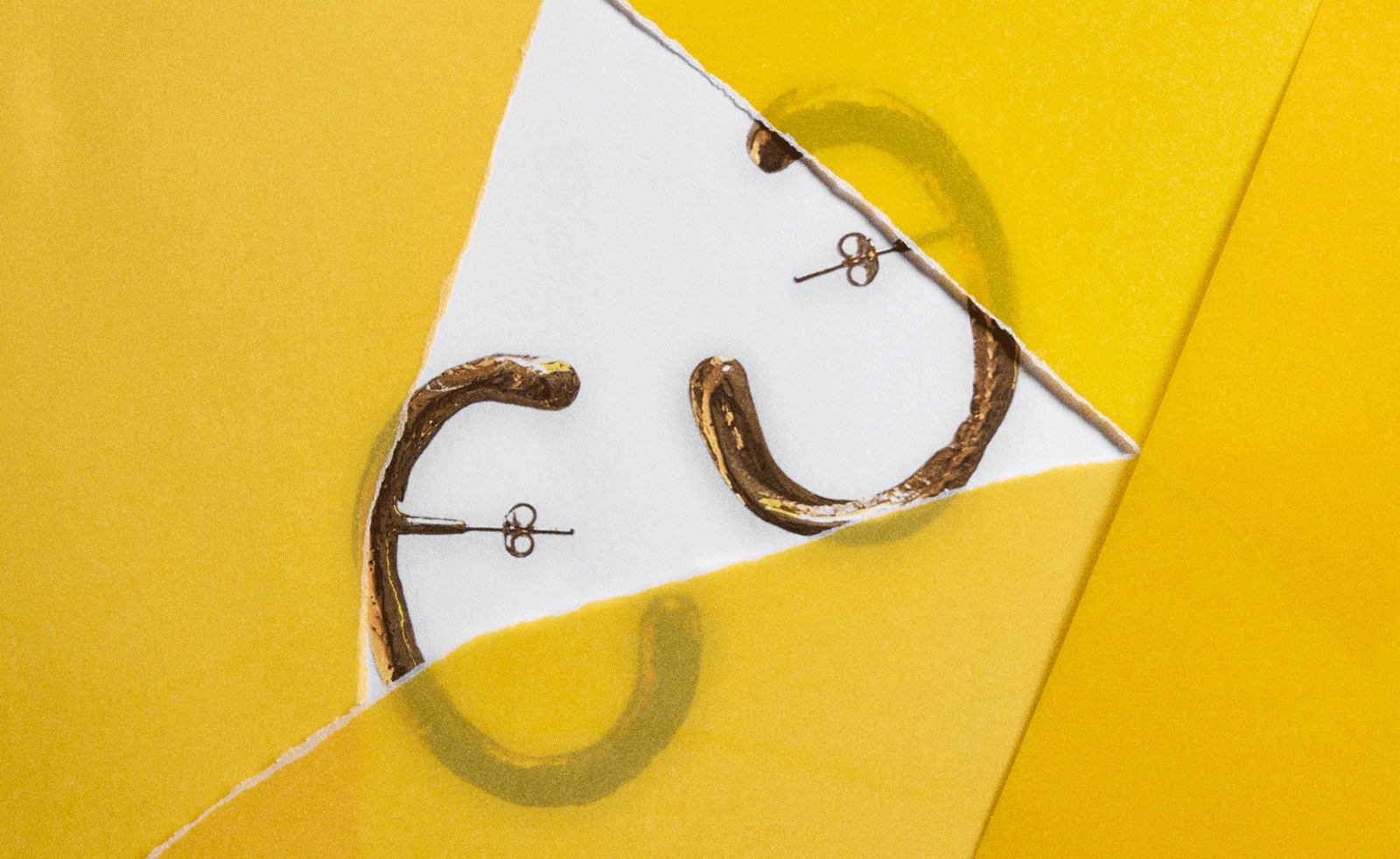 Next-generation jeweller Rosalie Carlier is one to watch
Next-generation jeweller Rosalie Carlier is one to watchThe young jewellery designer creates sensuous but bold pieces intended to ‘evoke emotion in the wearer’
-
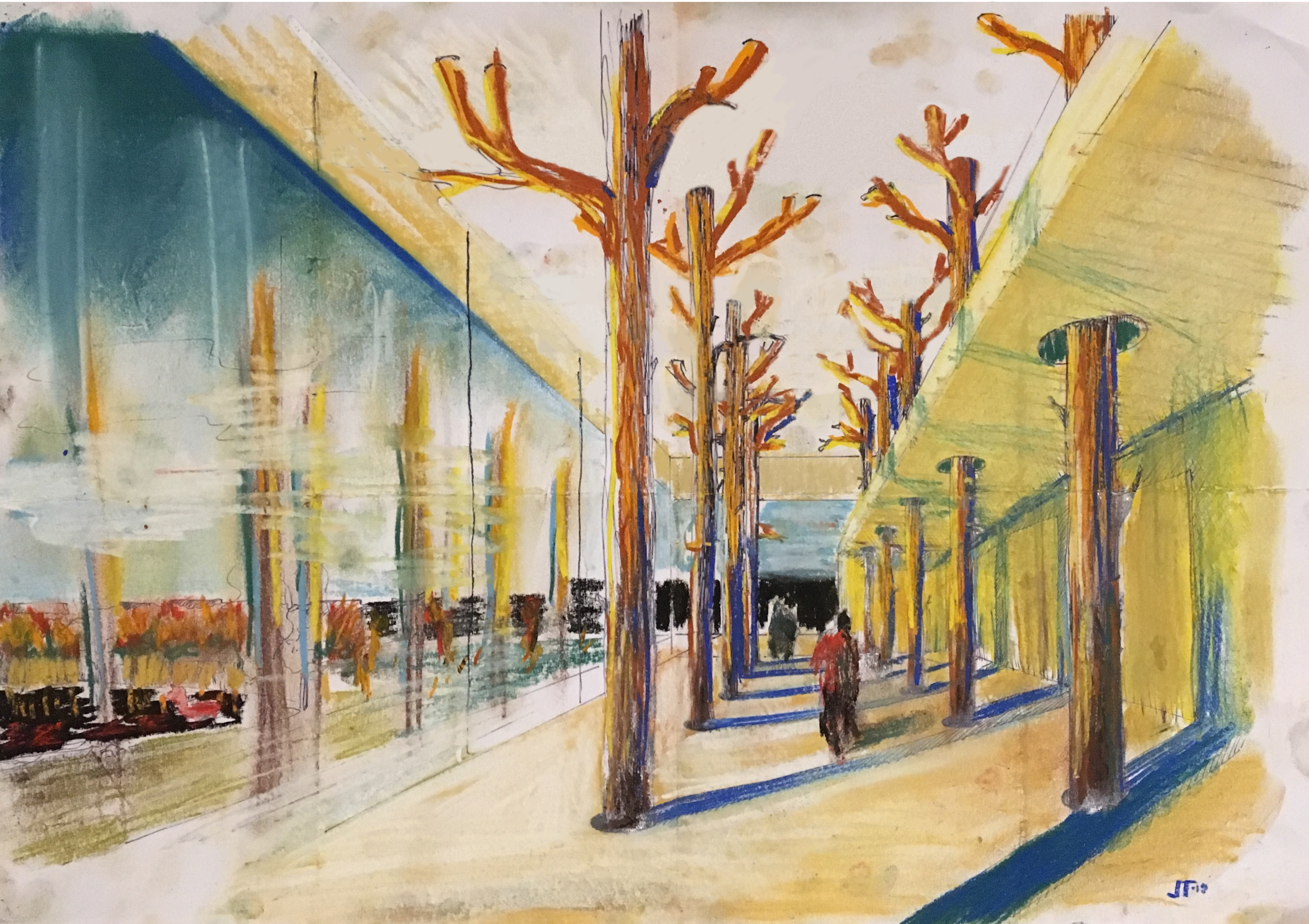 Jaakko Torvinen and Elli Wendelin design transportable wooden building
Jaakko Torvinen and Elli Wendelin design transportable wooden buildingOur Next Generation 2022 showcase shines a light on 22 outstanding graduates from around the globe. Here, we profile architecture graduates Jaakko Torvinen and Elli Wendelin from Aalto University’s School of Arts, Design and Architecture, Finland
-
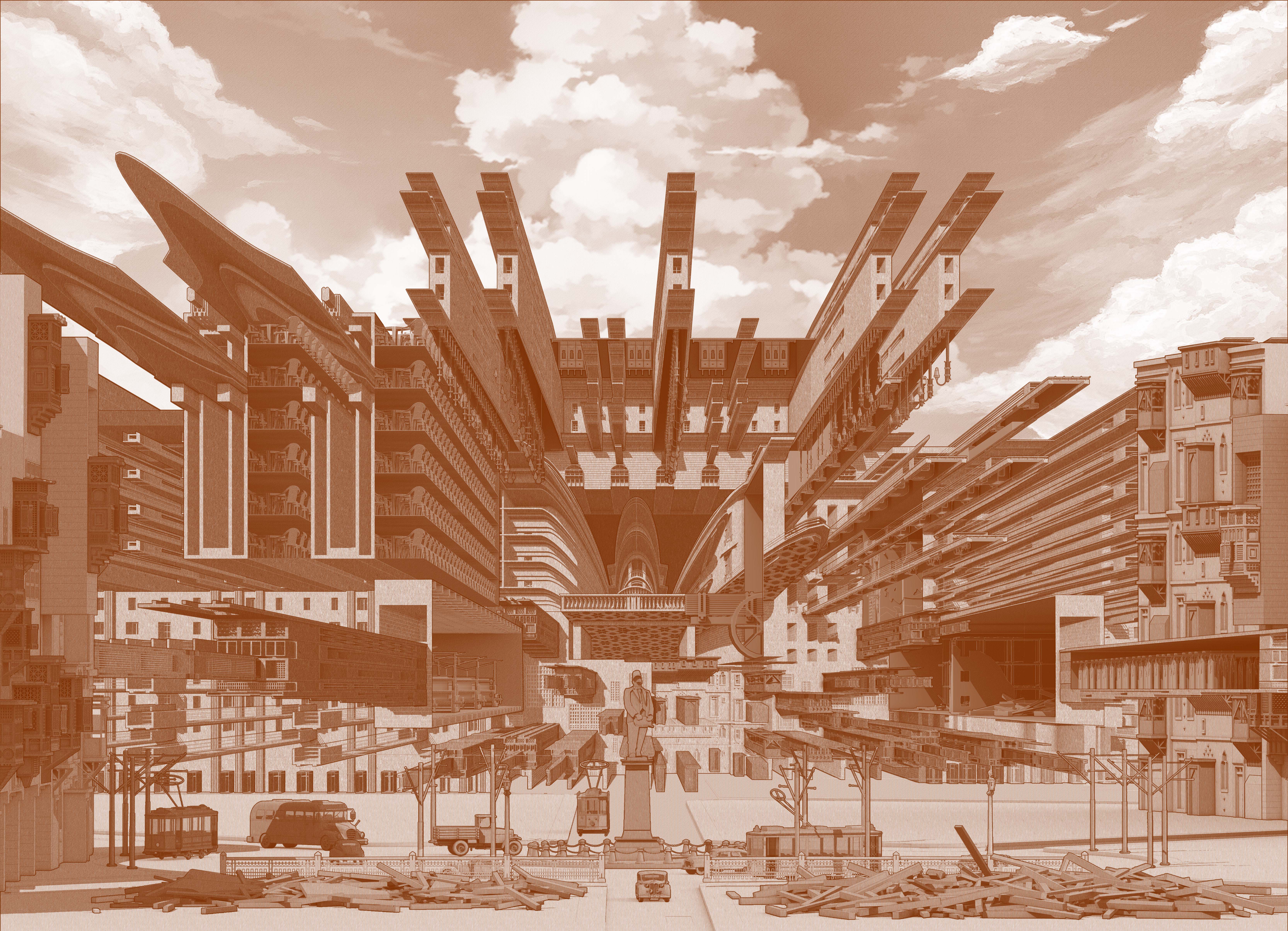 Kamal Ranchod uses architectural drawing to decolonise Egyptian history
Kamal Ranchod uses architectural drawing to decolonise Egyptian historyOur Next Generation 2022 showcase shines a light on 22 outstanding graduates from around the globe, in seven creative fields. Here, we profile Kamal Ranchod, from the University of Johannesburg’s Graduate School of Architecture, South Africa
-
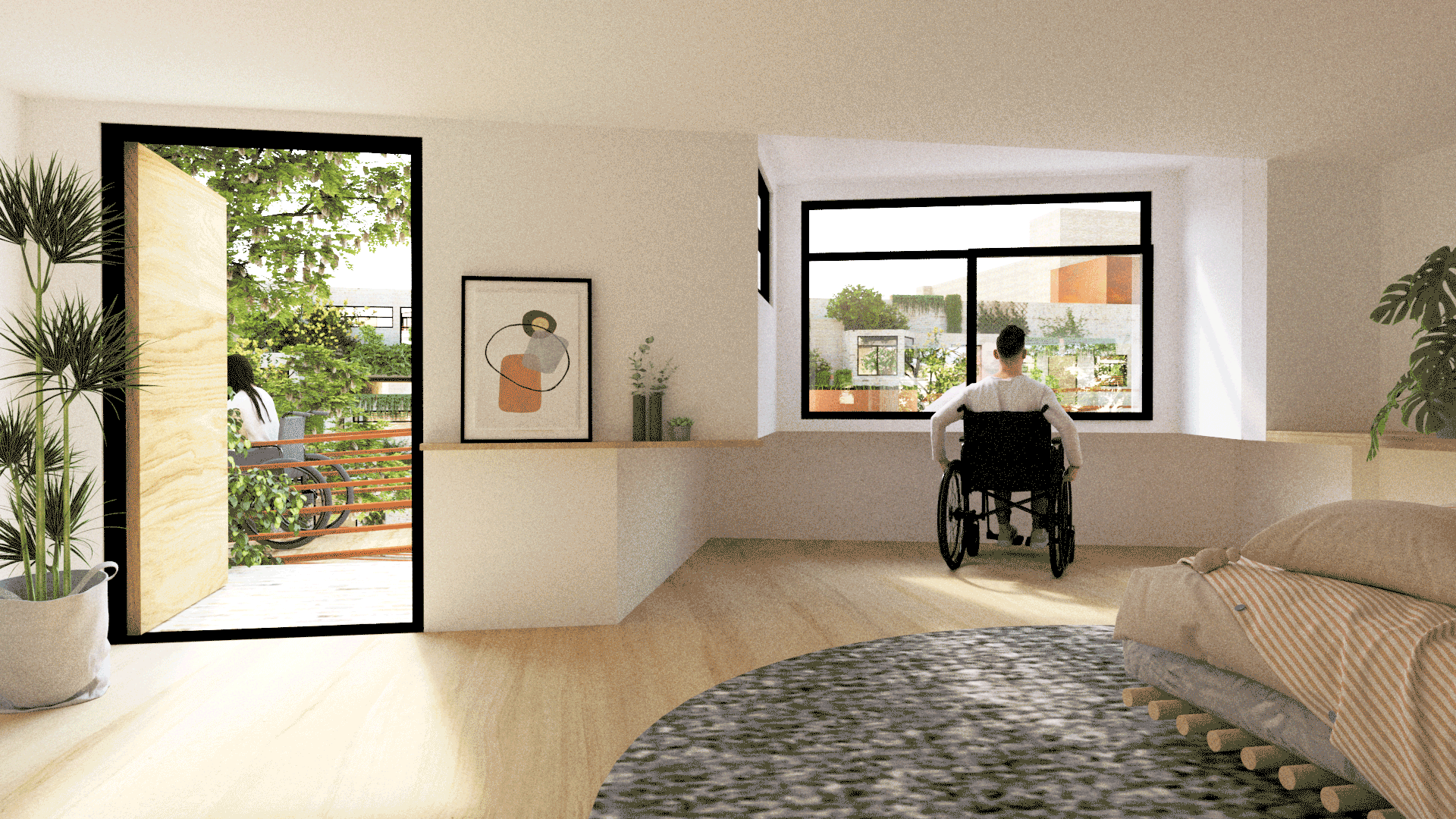 ‘Cripping Architecture’: Shaina Yang reimagines the world for a different body type
‘Cripping Architecture’: Shaina Yang reimagines the world for a different body typeOur Next Generation 2022 showcase shines a light on 22 outstanding graduates from around the globe, in seven creative fields. Here, we profile architecture graduate Shaina Yang from the Harvard Graduate School of Design, USA
-
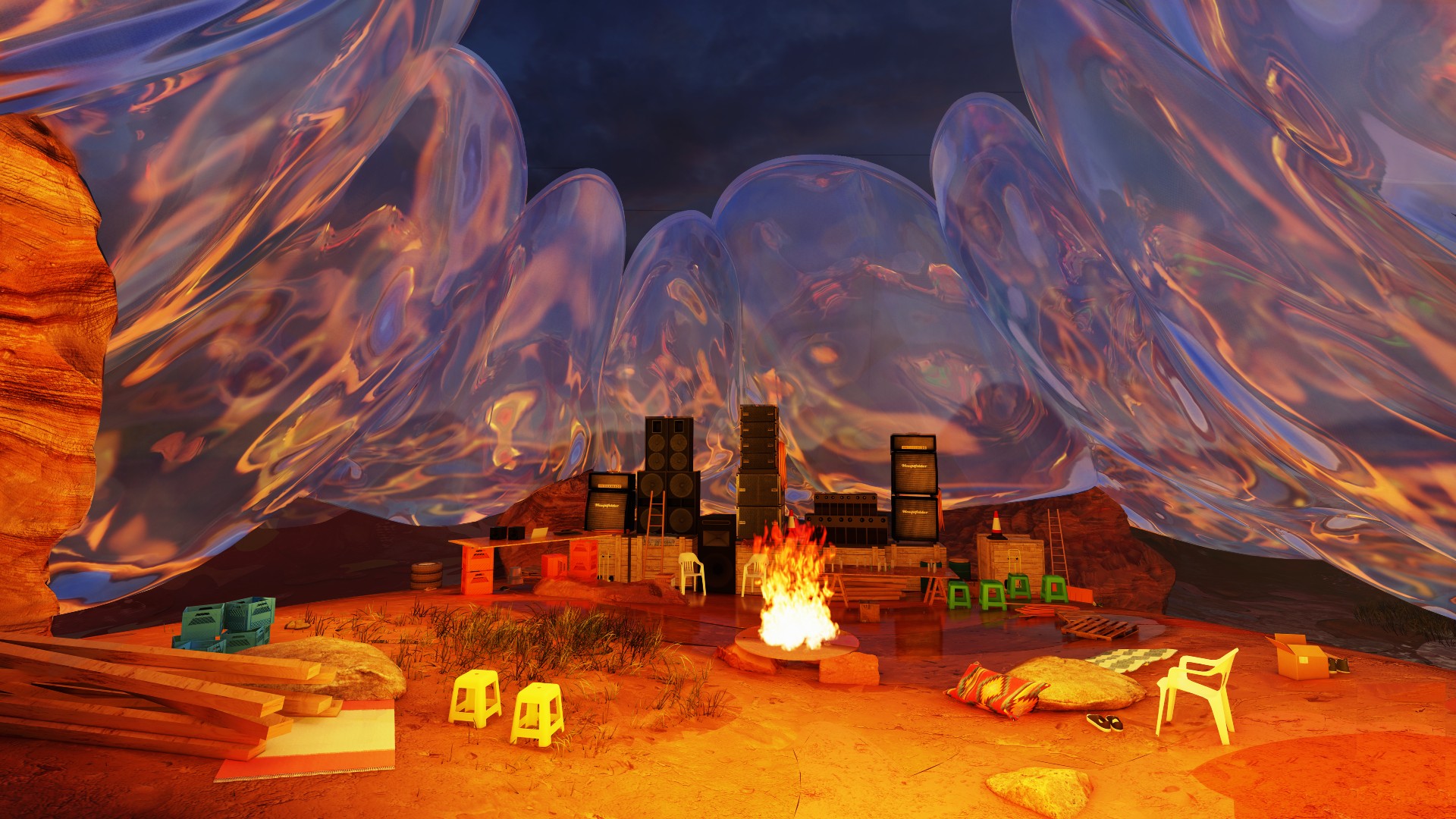 Matthew Avallone proposes ‘inhabitable park-scape’ for togetherness in Tijuana
Matthew Avallone proposes ‘inhabitable park-scape’ for togetherness in TijuanaOur Next Generation 2022 showcase shines a light on 22 outstanding graduates from around the globe, in seven creative fields. Here, we profile architecture graduate Matthew Avallone, from the Royal College of Art, UK
-
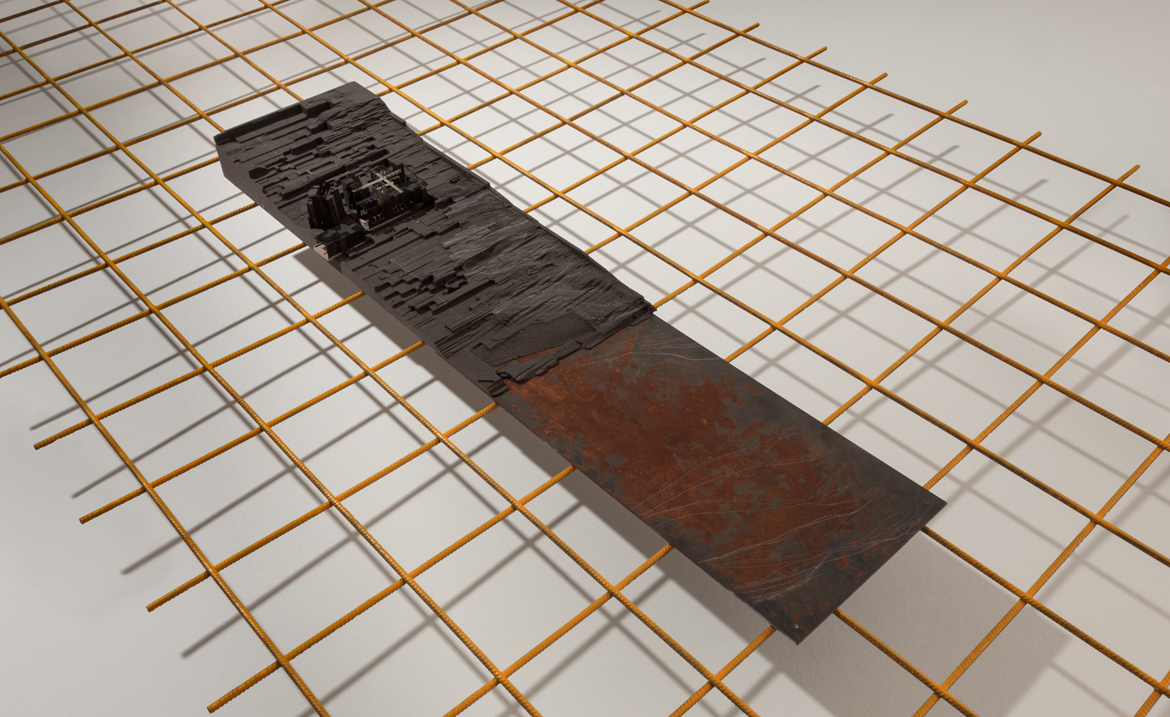 Architecture
ArchitectureWe cast our nets wide to find the best emerging architects and engineers
-
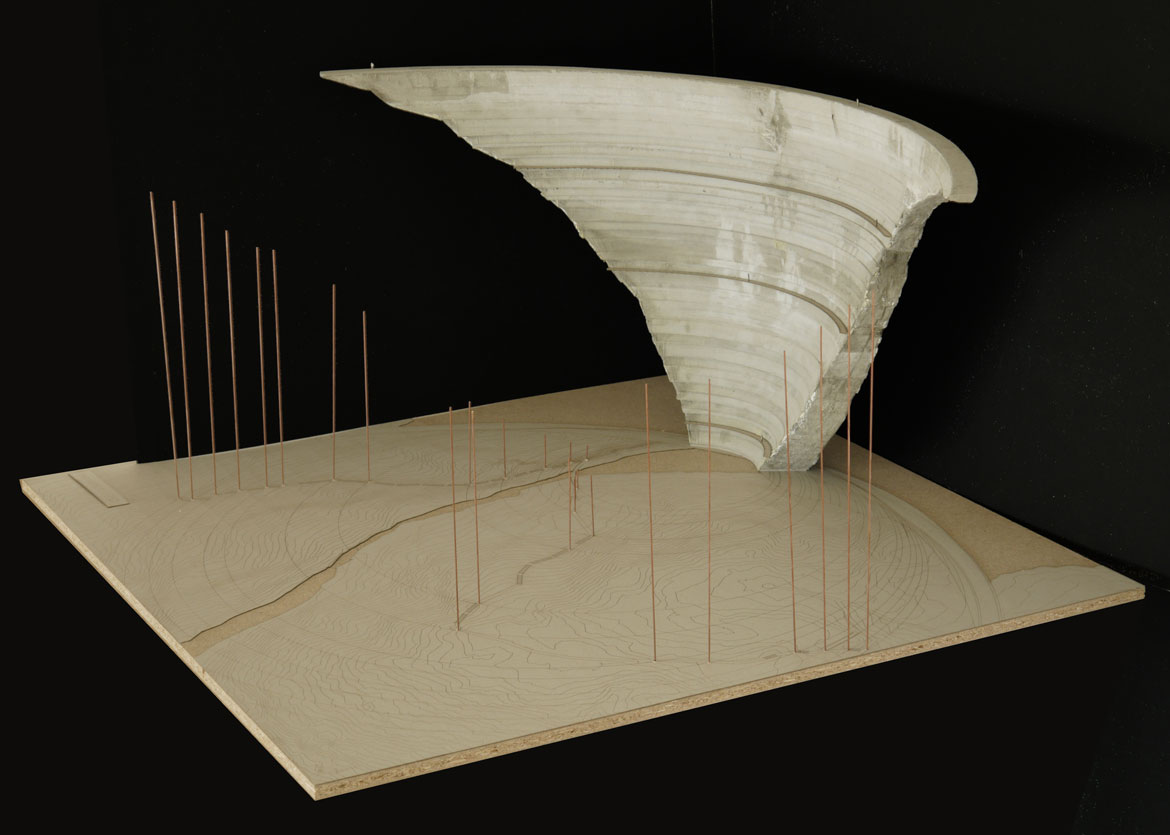 Architecture
ArchitectureThe next generation of architects and engineers are setting themselves an ambitious agenda
-
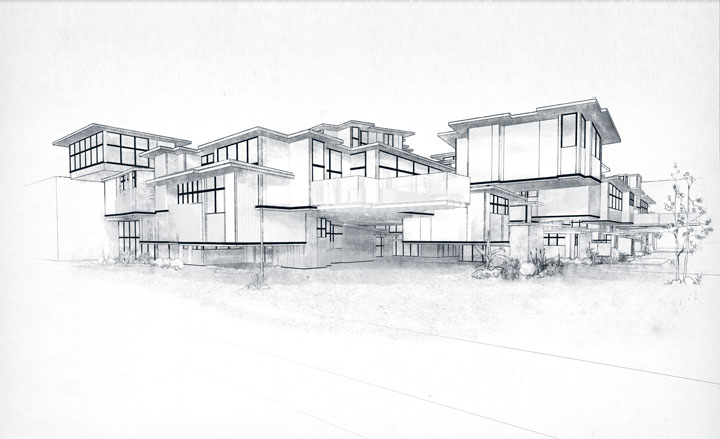 Graduate Directory 2012
Graduate Directory 2012 -
 Wallpaper* Graduate Directory 2009
Wallpaper* Graduate Directory 2009